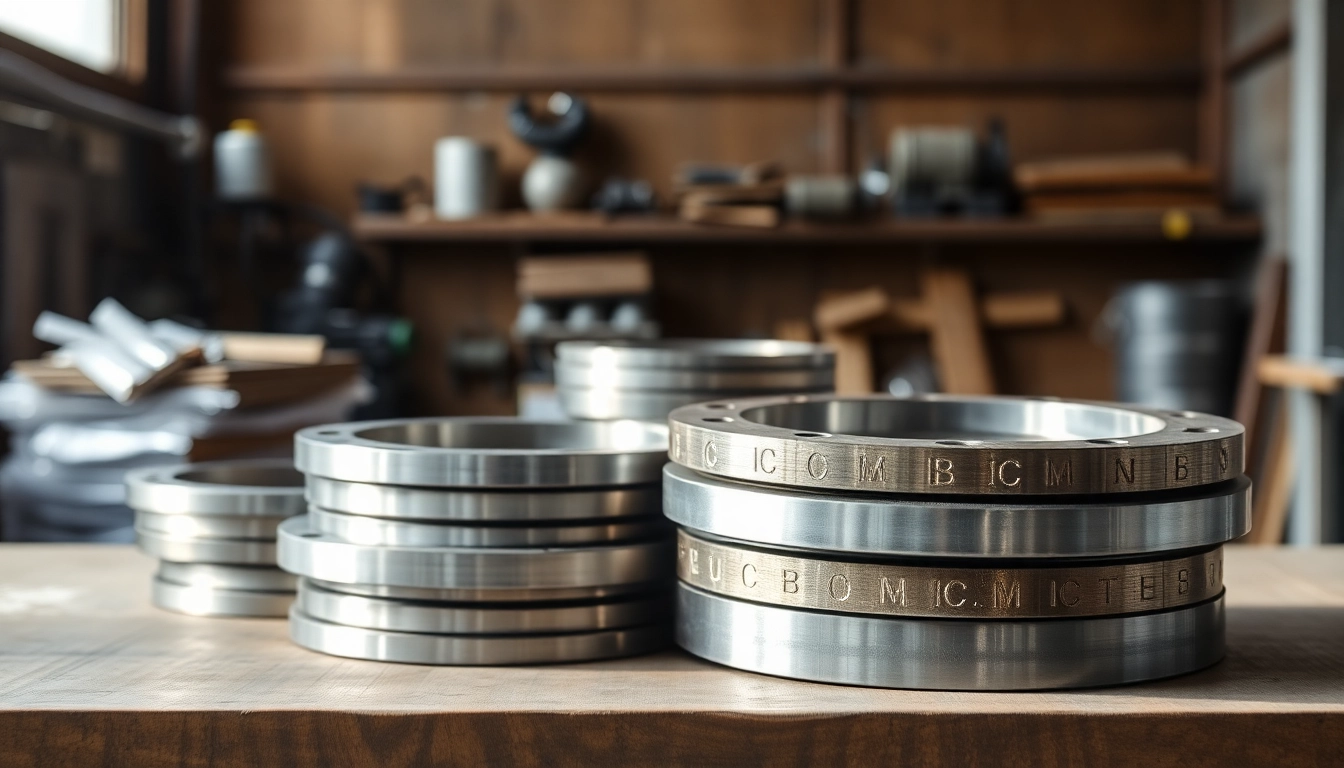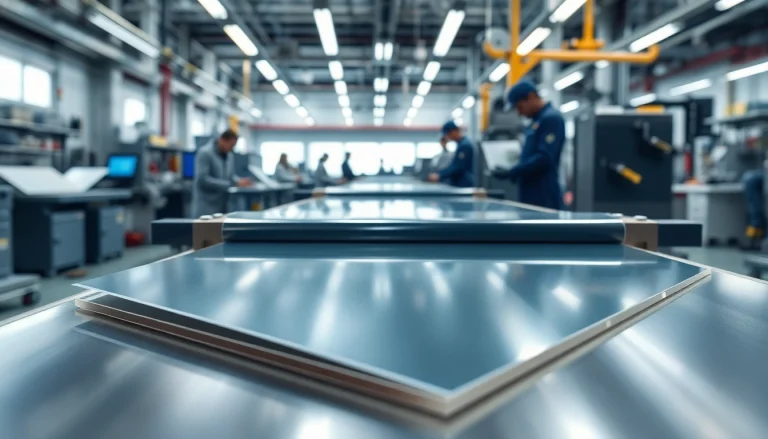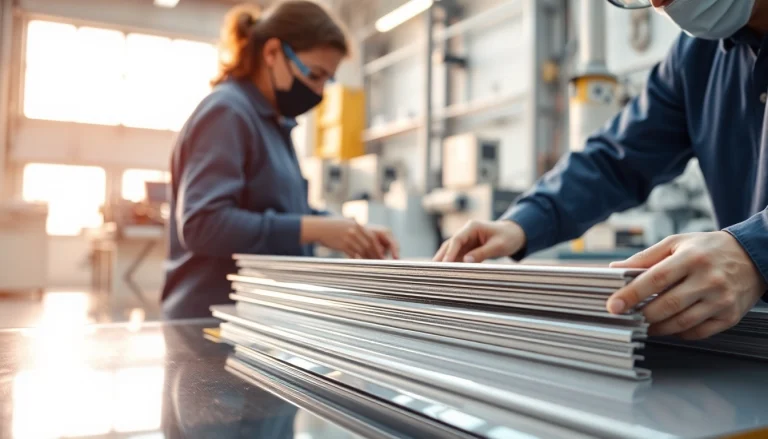
Understanding Steel Flanges: Types and Materials
What are Steel Flanges?
Steel flanges are mechanical components used to join two sections of pipe or to provide a connection point for valves, pumps, and other equipment. They enhance the structural integrity and facilitate the seamless operation of piping systems by offering bolted connections that help manage vibrations, tolerances, and stresses. When considering the wide array of industrial applications, the significance of steel flanges cannot be overstated.
Types of Steel Flanges
Flanges come in various types, each designed for specific applications and requirements. The most common types include:
- Weld Neck Flange: This type features a long tapered hub that provides a strong weld and is ideal for high-pressure applications.
- Slip-On Flange: As the name suggests, this flange slips onto the pipe, offering an easy alignment but with lower strength than a weld neck flange.
- Blind Flange: It serves as a closure for a piping system, blocking off the end of the pipe and is useful for maintenance access points.
- Screwed Flange: This includes threads on the inside, allowing it to screw onto the pipe, which simplifies installation but is less secure.
- Lap Joint Flange: Designed to be used with a stub end, this flange offers flexibility in alignment and is often employed in systems requiring frequent disassembly.
- Socket Weld Flange: This flange enables the pipe to be inserted into a socket, providing a robust connection commonly used for small diameter pipes.
Materials Used for Steel Flanges
The material choice for steel flanges is crucial and is typically dictated by the specific application and environmental conditions. Common materials include:
- Carbon Steel: Known for its strength and durability, carbon steel flanges are versatile and widely used across different industries.
- Stainless Steel: These flanges offer excellent corrosion resistance, making them suitable for use in chemical processing and marine environments.
- Alloy Steel: Used in high-strength applications, alloy steel flanges can handle extreme temperatures and pressures.
- Ductile Iron: Often used in water and wastewater applications, ductile iron flanges offer excellent strength and ductility.
Applications of Steel Flanges Across Industries
Steel Flanges in Construction
In the construction industry, steel flanges are vital components for connecting various piping systems within buildings. Their robust nature allows them to handle various pressures and types of fluids, from water to gas and steam. The versatility of steel flanges enables engineers to customize and design plumbing systems effectively, ensuring safety and reliability in vast infrastructures.
Utilization in Oil and Gas
The oil and gas sector heavily relies on steel flanges for transmission and distribution systems. Given the corrosive environment and rigorous demands of this industry, particular attention is paid to the materials used for flanges. Stainless steel and specially coated alloys provide the necessary resistance against corrosion and wear, enhancing the performance and longevity of the entire pipeline system.
Applications in Water Supply Systems
Steel flanges are crucial in water supply systems, providing efficient and leak-proof connections in various scenarios, including municipal water systems, sewage treatment plants, and irrigation systems. They facilitate maintenance and easy repairs, ensuring the uninterrupted flow of water essential for daily life and agricultural activities.
Choosing the Right Steel Flanges for Your Project
Factors to Consider When Selecting
When selecting steel flanges, several key factors must be assessed:
- Pressure Rating: Ensure that the flange can withstand the pressure requirements of your system.
- Material Compatibility: Match the flange material with the type of fluid it will encounter to avoid corrosion and damage.
- Size and Dimensions: Select flanges that are adaptable to the existing piping specifications.
- Welding or Mechanical Connection: Choose the connection type based on your installation capacity and project needs.
Common Mistakes in Flange Selection
Flange selection errors can lead to serious operational issues. Common pitfalls include:
- Using inappropriate materials that do not match the operational environment.
- Neglecting to verify pressure ratings, leading to flange failure.
- Inadequate attention to joint design and bolting specifications.
Best Practices for Sizing and Specification
To ensure that you choose the right flanges:
- Conduct thorough assessments of system requirements before selection.
- Work closely with engineers and suppliers to finalize specifications.
- Utilize industry standards such as ASME and ANSI for proper sizing and manufacturing guidelines.
Installation and Maintenance of Steel Flanges
Preparation Before Installation
Proper preparation is key to a successful flange installation. This includes cleaning the flanges, ensuring all surfaces are free from debris or rust, and verifying that the components being joined have been adequately inspected for defects.
Installation Techniques
There are multiple techniques for installing flanges, with precision being essential. Common methods include:
- Aligning flanges accurately and inserting bolts in a staggered sequence.
- Using torque wrenches to apply appropriate force to each bolt for ensuring a leak-proof connection.
- Pressurizing the system after installation to check for leaks.
Maintenance Tips for Longevity
Regular maintenance is crucial for extending the life of steel flanges. Maintenance practices should include:
- Routine inspections for signs of wear, corrosion, or leaks.
- Cleansing of flanges to prevent build-up that can lead to failures.
- Timely replacement of damaged components before they compromise system integrity.
Future Trends in Steel Flanges Production and Use
Advancements in Steel Flange Manufacturing
Innovation in manufacturing techniques, such as the adoption of 3D printing and automated processes, are set to revolutionize the production of steel flanges. These advances aim to enhance precision while reducing labor costs and waste, thereby improving eco-friendliness in the manufacturing sector.
Sustainability in Steel Production
With increasing awareness of environmental impacts, sustainable practices in steel production are drawing attention. The industry is increasingly focused on using recycled materials in flange production and adopting energy-efficient technologies to minimize the carbon footprint associated with traditional manufacturing processes.
Innovations Affecting Steel Flange Applications
Future innovations, including coatings that enhance surface properties and reduce wear, will likely expand the scope of applications for steel flanges. Furthermore, smart technology integration enables real-time monitoring of flange integrity, facilitating preventive maintenance strategies that can drastically reduce downtime.






